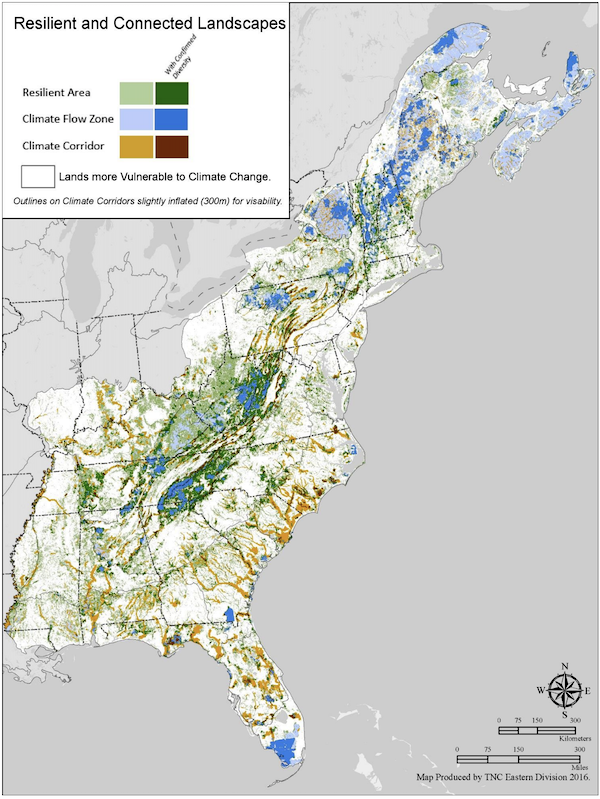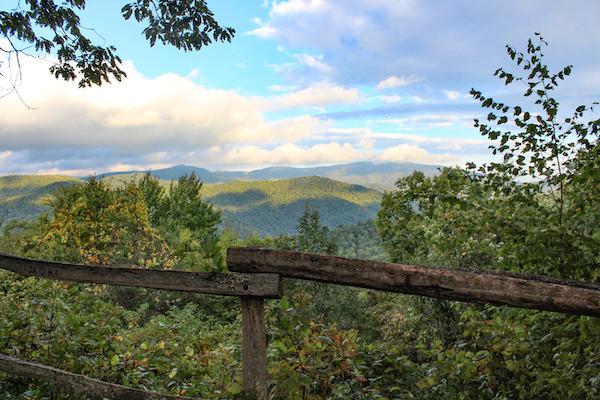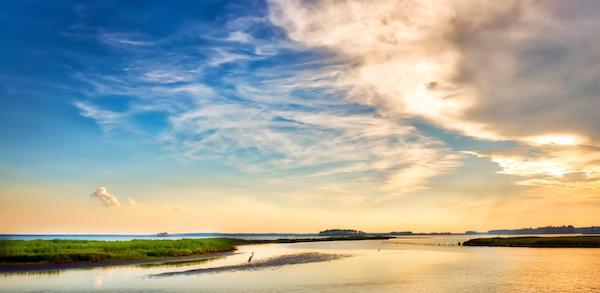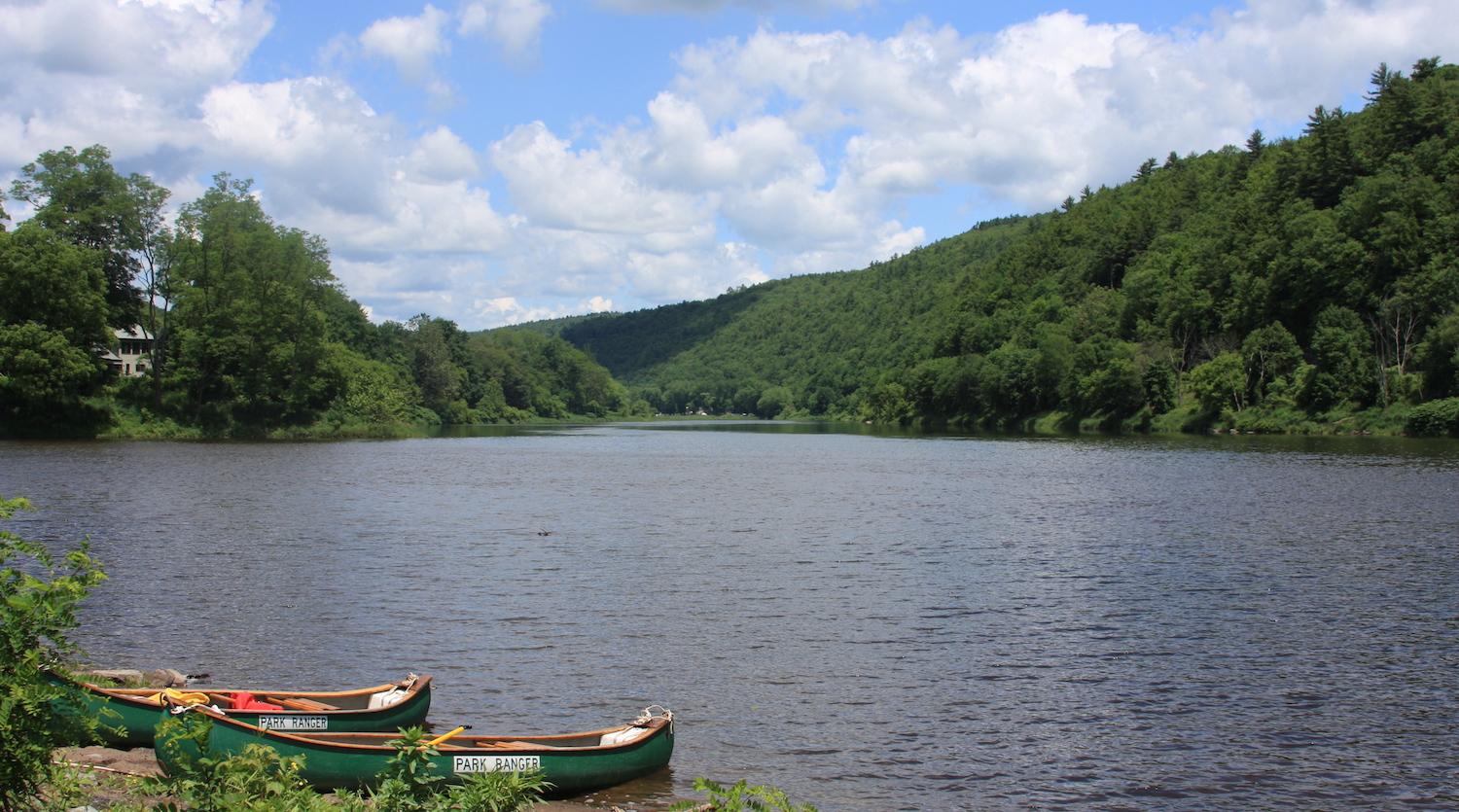Feb 5 – Written By Michael Sparks
Room To Grow? For Parks In The Eastern U.S., More Than You Realize
As the Biden administration's 30 by 30 initiative moves forward, it's likely it will rely heavily on the National Park System to succeed.
As the first major step towards reaching its goal to “conserve, connect, and restore” 30 percent of the nation’s land and water by 2030, the Biden administration released its “America the Beautiful” report in 2021, laying out the broad principles guiding the effort, but lacking specific details on which lands, exactly, need to be conserved. Despite this lack of details, though, it’s clear “America the Beautiful” will rely heavily on the National Park Service.
While it’s easy to imagine reaching 30 percent simply by expanding the vast park units in the West, that doesn’t do a whole lot of good for the millions of people, plants, and animals in the East.
“The answer is a web of sites across the entire country, it’s not one big area somewhere,” Dr. Mark Anderson, director of conservation science at The Nature Conservancy told the Traveler in a recent interview.
Luckily, there is more room for parks to grow in the East than you might think.

Dr. Anderson led a team at the Conservancy that created the Resilient and Connected Lands Network. The network identified areas high in “landscape diversity” and “local connectedness.” Diverse landscapes with a range of topography and elevation provide protection against a wide variety of threats: high ground to avoid floods, shade to avoid heat, berries to eat when the fish population is low; and as climate change forces animals to migrate to find suitable habitat, it’s critical they have a path of connected lands to get there.
Lands that are diverse and connected are the “most likely to remain resilient” to climate change, Dr. Anderson said.
Using the Conservancy’s Resilient and Connected Lands Network, the Traveler identified several parks that are in or directly adjacent to resilient lands and have existing authority to acquire more land without additional congressional approval (notoriously slow), thus making them prime targets for further expansion.
Two of those sites are the Blue Ridge Parkway–a 469 mile scenic road in North Carolina and Virginia–and Great Smoky Mountains National Park, at the parkway’s terminus in North Carolina, extending into Tennessee.
The sweeping forests the parks protect store vast amounts of carbon dioxide, provide a critical wildlife corridor for millions of birds and other animals, and protect one of the largest watersheds on the east coast.
The main force driving any park unit’s ability to acquire and protect more land is that park’s enabling legislation. Some parks are given strict boundaries they cannot grow beyond. Others, like Great Smoky, are more flexible. When Great Smoky was established in 1940, it was authorized to be up to 750,000 acres, but in actuality is only 522,000 acres due to existing privately owned land within the park’s boundaries. Assuming owners are willing to sell and the land meets park criteria, the park could have over 225,000 acres of room to grow.
According to Phil Francis, former superintendent at Blue Ridge Parkway and Great Smoky Mountains and the outgoing chair of the Coalition to Protect America’s National Parks, there are more than 4,000 individual landowners adjacent to park lands. With that many different landowners, there’s no one size fits all answer.
“We have a toolbox we can choose from: conservation easements, donations, acquisitions,” he told the Traveler.
Blue Ridge Parkway, by its enabling legislation, is authorized to acquire lands that are contiguous with current parkland, meet the park’s protection objectives, and, of course, have a willing seller, current parkway Superintendent Tracy Swartout told the Traveler in an earlier interview.
Even if the seller is willing, they may not be realistic. “I got a call once,” Francis laughed, “from someone who wanted to sell 3,000 pristine acres to Great Smoky. And when I asked him how much he wanted for it, his price was higher than the land acquisition budget for the entire National Park Service.”
While that particular price might have been unworkable, the fact is, until very recently, funding for land acquisition has been sorely lacking. “The Park Service has a list of needs,” Francis said, “but we haven’t seen the money allocated.”

That is starting to change. The Land and Water Conservation Fund is the main source parks use to acquire lands and The Great American Outdoors Act, passed in 2020, guarantees it at least $900 million in annual funding. That funding allows parks a level of certainty they haven’t had before and is a “game changer,” says Amy Lindholm, Land and Water Conservation Fund Coalition manager and northeast regional coordinator at the Appalachian Mountain Club.
As important as funding is, it doesn’t magically solve all of the Park Service’s problems. As the Traveler has documented, major projects, like acquiring new lands, can take years to complete and the service is plagued by a lack of personnel.
In fact, almost every person the Traveler spoke to for this article identified the length of the acquisition process–and specifically the appraisal step–as the second biggest hurdle to protecting more land, after a lack of funding. When the Traveler asked the Park Service what it is doing to address the issue, a spokesperson offered no specific plans. "Under current Department of the Interior policy, the Department’s Appraisal and Valuation Services Office (AVSO) is responsible for all appraisal and valuation services. NPS is currently working with AVSO and others in the Department to identify impediments and recommend solutions that may improve the timeliness of receiving appraisal delivery."
But if the Park Service can work to overcome these challenges, the rewards are plenty: according to The Nature Conservancy, the eastern resilient lands network “contains over 80,000 known rare species… stores 56% of the region's carbon and contains 75% of the high value water supply land.”
Sometimes, when a park doesn’t have expansion authority, more creative solutions are required. The proposed Chesapeake National Recreation Area would combine existing park units (and potentially acquire more land in the future) to create a unified national recreation area–a unique solution to the problem of fragmentation in the east, says one of the many folks working on the proposal, Pam Goddard, Mid-Atlantic senior program director at the National Parks Conservation Association. “We’re looking at already protected areas and where we can plug the holes and make the entire area stronger.
“Parks in the west have vast amounts of land they could acquire. In the east we’re looking at critical, small expansions. Looking at landscape connectivity and wildlife corridors.”

This proposal is different from others listed here: it would require congressional authorization. Senator Chris Van Hollen (D-MD) is leading the charge. In a statement to the Traveler, he said, “The Chesapeake Bay is a national treasure with natural, cultural, historical, and recreational significance…. This designation will bolster our efforts to protect and focus more federal resources on restoring the Bay while boosting tourism and supporting our Bay economy.”
The Biden Administration has a short timeline and a narrow path to reach its conservation goals. But, as Goddard put it, “History doesn’t stand still. We need to be nimble when the opportunity arises or else tomorrow it’ll all be condos.”
Some Additional Examples Of Where The National Park System Could Be Expanded In The East

Though non-exhaustive, the following short list of parks inside the resilient lands network and with the requisite expansion authority, in addition to Great Smoky and the Blue Ridge Parkway, represent a potentially game-changing addition to “America the Beautiful”:
-
Katahdin Woods and Waters National Monument, a critical climate corridor and watershed in Maine, received funding in late 2020 to acquire about 4,000 acres of land. When the monument was established in 2016, the land was owned privately and, though the seller signaled willingness to sell, the park didn’t have the funding. Now, according to a spokesperson, the park will be able to connect three existing parcels within the monument.
-
At Obed Wild and Scenic River, in northeastern Tennessee, the park is looking to acquire just 27 acres of park-adjacent land. A mining company is looking to explore the area but, because the land is an important viewshed for Obed, a Park Service spokesperson wrote, the park has the authority to acquire it (assuming a willing seller and that the land meets the Park Service’s standards). Obed is near the top of the Land and Water Conservation Fund’s priority list for 2022 and will most likely have the necessary funding soon.
-
Little River Canyon National Preserve, in Alabama, is also one of the fund’s top priorities in 2022 and is looking to acquire 95 additional acres. Created in 1992, the park has been working with The Nature Conservancy and other partners to acquire land on its eastern side after a 2009 boundary expansion. According to the park, Little River Canyon is sometimes called “the Grand Canyon of the East” (though it’s obviously much smaller).
-
The Upper Delaware Scenic and Recreational River, in New York and Pennsylvania, takes a different approach to acquisition. Although originally authorized to acquire up to 1,000 acres along the banks of the river, the Park Service currently owns under 10 percent of that, with the vast majority of the 73.4 mile section remaining in private ownership, as it was in 1968 when Congress created the park. “We favor private ownership and conservation easements,” said Laurie Ramie of the Upper Delaware Council, which manages the park in coordination with the Park Service and local agencies, and much of the park is protected under easements and other similar agreements.
This article was originally published on National Parks Traveler